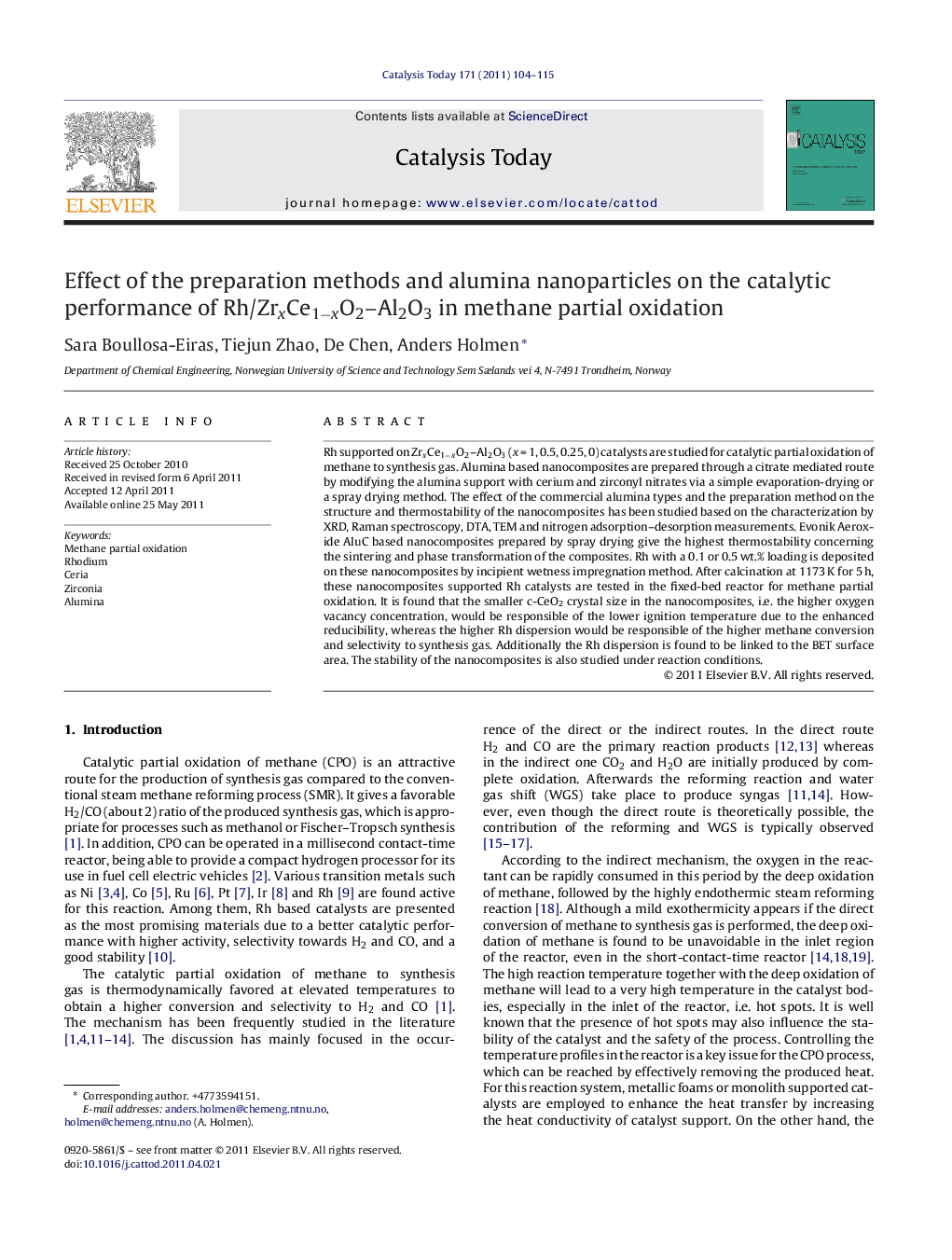| Article ID | Journal | Published Year | Pages | File Type |
|---|---|---|---|---|
| 55933 | Catalysis Today | 2011 | 12 Pages |
Rh supported on ZrxCe1−xO2–Al2O3 (x = 1, 0.5, 0.25, 0) catalysts are studied for catalytic partial oxidation of methane to synthesis gas. Alumina based nanocomposites are prepared through a citrate mediated route by modifying the alumina support with cerium and zirconyl nitrates via a simple evaporation-drying or a spray drying method. The effect of the commercial alumina types and the preparation method on the structure and thermostability of the nanocomposites has been studied based on the characterization by XRD, Raman spectroscopy, DTA, TEM and nitrogen adsorption–desorption measurements. Evonik Aeroxide AluC based nanocomposites prepared by spray drying give the highest thermostability concerning the sintering and phase transformation of the composites. Rh with a 0.1 or 0.5 wt.% loading is deposited on these nanocomposites by incipient wetness impregnation method. After calcination at 1173 K for 5 h, these nanocomposites supported Rh catalysts are tested in the fixed-bed reactor for methane partial oxidation. It is found that the smaller c-CeO2 crystal size in the nanocomposites, i.e. the higher oxygen vacancy concentration, would be responsible of the lower ignition temperature due to the enhanced reducibility, whereas the higher Rh dispersion would be responsible of the higher methane conversion and selectivity to synthesis gas. Additionally the Rh dispersion is found to be linked to the BET surface area. The stability of the nanocomposites is also studied under reaction conditions.
Graphical abstractFigure optionsDownload full-size imageDownload high-quality image (118 K)Download as PowerPoint slideHighlights► Preparation of alumina based nanocomposites by modifying the alumina support with cerium and zirconium. ► The smaller c-CiO2 crystal size is responsible for the lower ignition temperature for Rh supported on the nanocomposites. ► Higher Rh dispersion is responsible for higher conversion and selectivity to syngas. ► Rh dispersion linked to the BET surface area.
